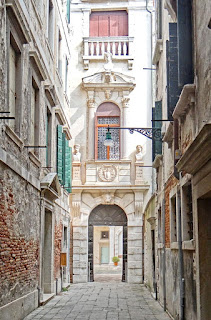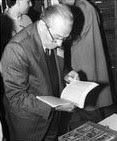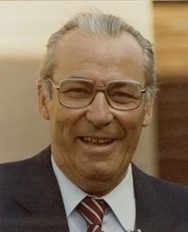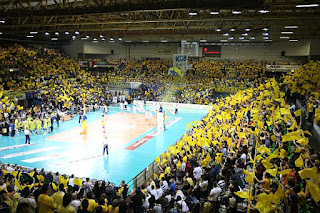Owned works by Da Vinci, Titian and Raphael among others
 |
| Lorenzo Lotto's portrait of Cardinal Domenico Grimani, painted in the 16th century |
Grimani acquired works among others by Italian Renaissance masters such as Leonardo da Vinci, Giorgione, Titian and Raphael, as well as by Hans Memling and Hieronymus Bosch, two of the great Early Netherlandish painters of the 15th century.
He also owned the illustrated manuscript that became known as the Grimani Breviary, produced in Ghent and Bruges between 1510 and 1520, which is considered one of the most important works of Flemish art from the Renaissance period.
Gerard David, Gerard Horenbout, Simon Bening and other illustrators contributed to the work, which was acquired by Grimani for 500 gold ducats, and subsequently bequeathed to the Venetian Republic. It is now housed in the Biblioteca Marciana, opposite the Doge’s Palace.
Domenico also began the collection of Greek and Roman antiquities that was subsequently expanded by his nephew, Giovanni, and now kept in the Palazzo Grimani museum, near Campo Santa Maria Formosa in the Castello District.
 |
| Grimani's father, Antonio, a wealthy merchant who became Doge of Venice |
After showing an early interest in humanist studies, Domenico moved to the Medicean academy in Florence, where he became part of the circle of Lorenzo de' Medici and associated with scholars such as Giovanni Pico della Mirandola and Angelo Poliziano. He obtained a doctorate in canon law at the University of Padua in 1487 and was elected a Senator of Venice that same year.
He became a cardinal in 1493, an appointment paid for by his father. He was not ordained a priest until 1498, becoming cardinal priest of San Marco after the election of Pope Julius II in 1503.
Other titles he held during his life included apostolic administrator in Nicosia, Patriarch of Aquileia, cardinal bishop of Albano, administrator of the diocese of Urbino and Bishop of Ceneda.
He died in 1523. Initially buried in the church of Santi Giovanni e Paolo in Rome, his remains were later moved to San Francesco della Vigna in Venice.
In addition to his fascination with art and antiquities, which began when he stumbled upon buried Roman remains while building a villa and a vineyard in Rome, Domenico also wrote several theological treatises.
 |
| The entrance to the Palazzo Grimani in Venice, which now houses a museum |
The Palazzo Grimani was built at the confluence of the canals of San Severo and Santa Maria Formosa. Purchased by Antonio Grimani, it was passed on as a legacy to his grandsons Vettore Grimani, Procurator de Supra for the Venetian Republic, and Giovanni Grimani, Patriarch of Aquileia, who refurbished the old structure inspired by architectural models taken from classicism. In 1558, at the death of Vettore, Giovanni became the sole owner of the building, in which he set up his collection of antiques, including sculptures, marbles, vases, bronzes and gems. Until 1865, the palace was the property of the Santa Maria Formosa branch of the Grimani family but it later deteriorated and passed through several owners until it was bought by the city in 1981. After a long period of restoration, it was opened to the public in December 2008.
 |
| The Piazzetta San Marco, with the Doge's Palace on the left and the Biblioteca Marciana opposite |
The Doge’s Palace - Palazzo Ducale in Italian - is the former seat of the Government of Venice and the home of the Doge from the early days of the republic. For centuries this was the only building in Venice entitled to the name palazzo. The others were merely called Cà, short for Casa. The current palazzo was built in the 12th century in Venetian Gothic style, one side looking out over the lagoon, the other side looking out over the piazzetta that links St Mark’s Square with the waterfront. It opened as a museum in 1923 and is now run by the Fondazione Musei Civici di Venezia. The Biblioteca Marciana sits opposite, across the Piazzetta.
Also on this day:
1743: The birth of composer Luigi Boccherini
1953: The birth of actor and director Massimo Troisi
1977: The birth of opera singer Vittorio Grigolo
Home




